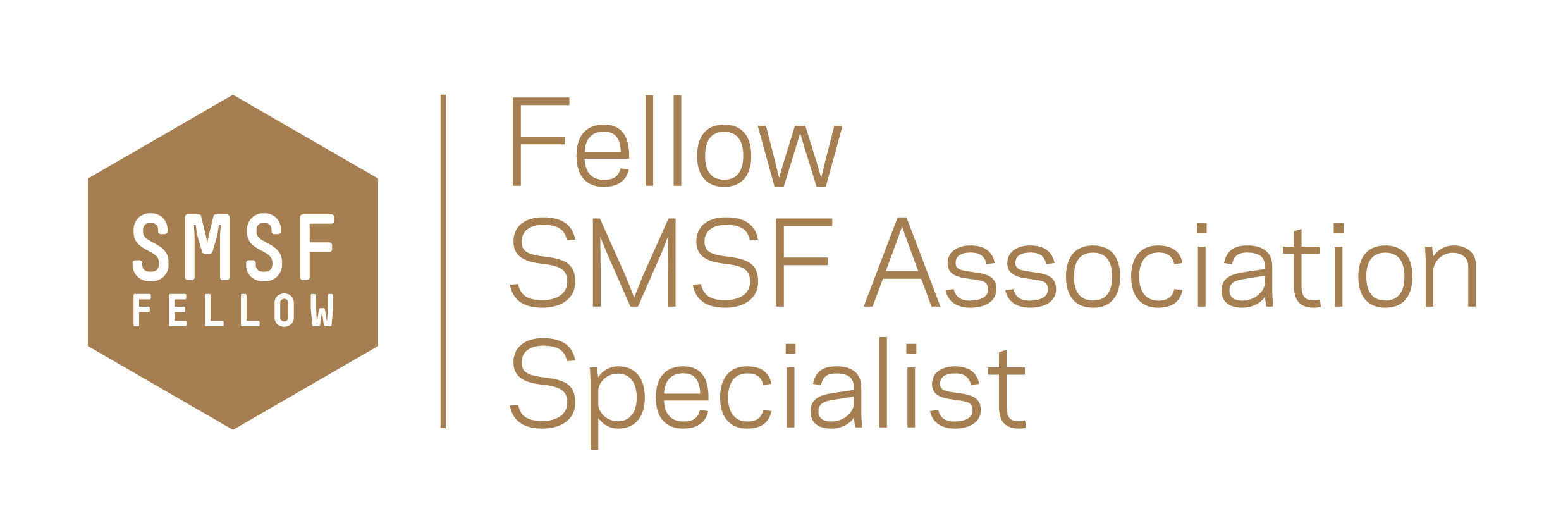
Depending on the tax components of your Superannuation balance you may leave a nasty tax bill for your ultimate beneficiaries on death. Here, we will review the use of withdrawal and re-contribution strategies, to maximise benefits for eventual beneficiaries and offer some protection against future legislation changes. Seek personal advice before implementing any strategy.
What has changed
The withdrawal and re-contribution strategy has been popular from both a retirement and estate planning perspective to manage tax outcomes for retired members and beneficiaries on the death of a member.
The benefit of the withdrawal and re-contribution strategy should now be reassessed as a result of some of the reforms which took effect between 1 July 2017 and 1 July 2022:
• the Non-Concessional Contribution (NCCs) cap are $110,000 ($330,000 using 3 year bring forward rule).
• indexation to $1.7m of the Total Super Balance cap (TSB) rule to determine eligibility to make NCCs
• indexation to between $1.6 and $1.7m Transfer Balance Cap (TBC( applicable to existing and new pensions.
• the abolition of anti-detriment payment (sigh of relief from many professionals!), and
From 1 July 2022, the ability for SMSF members over 67 to continue to make Non-Concessional (NCC) contributions up to age 75. This will help you get the maximum benefit available under the re-contribution strategy.
The basic re-contribution strategy
The re-contribution strategy involves withdrawing an amount from an SMSF member’s balance and making a non-concessional contribution (NCC) back into the SMSF in the same or another member’s name. This effectively enables any taxable component of the lump sum withdrawn to be converted into a tax-free component paying nil tax on death benefits.
Before you can use the strategy, the SMSF member needs to have met a full condition of release to be eligible to make lump sum withdrawals. Now, if you are under 75 you do not need to meet the work test eligibility to make NCCs but you do have to ensure that your Total Super Balance contribution cap limit will allow a re-contribution of the funds.
We normally suggest using this strategy after meeting a condition of release after age 60 and before age 75 because if this strategy is implemented by a person who is 60 or over, any withdrawal is received tax-free and not included in assesable income.
If the SMSF member is aged between preservation age and age 59, withdrawals from the tax-free component are tax-free, while any taxable component within the low rate cap (LRC), currently $230,000 for 2022/23, is effectively taxed at 0%. Amounts above the LRC are taxed at 15% plus Medicare Levy. These tax concessions are integral to the overall dollar benefit of the strategy.
The re-contribution strategy may help to:
- generate a more tax-effective retirement income stream for people aged under 60, by increasing the tax-free component of superannuation pension payments, and/or
- reduce the tax to be paid by non-tax dependant beneficiaries (usually financially independent adult children) on any death benefit lump sum after the member passes away.
- offer some protection against legislative changes to taxing of pensions as NCCs are after-tax contributions where no tax concession has been received.
Case Study Example
Michael, a widower, (aged 60) has $660,000 in an SMSF account. The tax components of his account are split 50:50, meaning that $330,000 of the account is taxable and $330,000 is tax-free. He has fully retired and therefore has complete access to his super benefits.
Michael has two adult children, his daughter Carmel and son Sebastian (neither of whom are financial dependents). Michael has a valid non-lapsing binding death benefit nomination in place in favour of them equally.
If Michael passed away today, $330,000 of his super benefit which is attributable to the taxable component would be subject to tax at a maximum rate of 15% plus Medicare Levy (if not paid to estate) as Carmel and Sebastian are not tax dependants.
Michael could use the re-contribution strategy which may give a better outcome for the kids from a tax perspective saving up to $56,100 ($330,000 x 17%). In addition, assuming Michael has other taxable passive investment income outside super, if Michael was to start an account-based pension, a concessional contribution strategy could also help him to reduce tax payable on his income using funds from the SMSF pension payments until he reaches age 67 and afterward to age 75 if he meets the work test yearly.
Maximum Total Super Balance for additional contributions
A person will not be eligible to make NCCs if their total super balance (across all super funds) on the prior 30 June is equal to or greater than $1.7m depending on their personal limit. If the total super balance is less than$1.7m but more than $1.48m on 30 June of the prior year, the person will be eligible to contribute some NCCs but cannot fully utilise the 3-year bring-forward of $330,000. In relation to the re-contribution strategy, this means that:
| TSB on 30 June of prior financial year | Contribution and bring-forward available |
| Less than $1.48m | 3 years ($330,000) |
| $1.48m to < $1.59m | 2 years ($220,000) |
| $1.59m to < $1.7m | 1 year ($110,000, no bring-forward available) |
| $1.7m and above | Nil |
- re-contributions, whereby one member of a couple makes a withdrawal from their SMSF account and contributes into their spouse’s member account, may become attractive to the extent that it would enable them both to maintain a member account balance of less than $1.7m, potentially preserving future eligibility to make NCCs.
$1.6 – $1.7m Pension transfer balance cap
From 1 July 2021, a transfer balance cap will rise to $1.7m (indexed) but somewhere between $1.6 and $1.7 for those who already have a pension in place. This measure was introduced in 2017 to limit the maximum amount that an individual can transfer into the retirement phase of superannuation. Any amount in excess of the transfer balance cap needs to
- remain in accumulation, or
- use a re-contribution strategy where one spouse makes a lump sum withdrawal and contributes the amount into their spouse’s account may also allow the couple to collectively hold more of their wealth in tax-effective superannuation pensions.
The Traps and interaction with Centrelink strategies
When deciding whether to use a re-contribution strategy, it’s important to consider each member’s personal circumstances, as well as any implications the re-contribution strategy may have on their broader situation.
Government benefits and payments
Withdrawing money from the taxable component before age 60 will increase the member’s taxable income, even though no tax will be payable on taxable amounts up to the LRC (which is $230,000 in 2022/23). This is because even though the effective tax rate on an amount withdrawn from the taxable component up to the LRC is nil, the amount is still included as income on the individual’s tax return.
It is via the application of a tax offset that the tax payable on the withdrawal within the LRC is reduced to nil.
This means that a lump sum withdrawal made as part of the re-contribution strategy could impact Government benefits and payments where entitlement is based on:
- assessable income, such as Government Co-contributions and spouse contribution tax offsets, and
- taxable income, such as the low-income tax offset, Medicare levy and surcharge and Family Tax Benefit.
Moving Funds to a Spouse under Age Pension age
A popular Centrelink strategy involves a person who is of Age Pension age cashing out some of his/her super and having the money contributed in the SMSF member account of their spouse who is below Age Pension age. This strategy can enable the older spouse to get more Age Pension, as super in the accumulation phase is not means-tested when held in the name of a person under Age Pension age. It can also enable taxable money to be converted into tax-free money and may result in a Government co-contribution or spouse tax offset.
I hope this guidance has been helpful and please take the time to comment. Feedback is always appreciated. Please reblog, retweet, like on Facebook, etc to make sure we get the news out there. As always please contact me if you want to look at your own options. We have offices in Castle Hill and Windsor but can meet clients anywhere in Sydney or via Skype. Just click the Schedule Now button up on the left to find the appointment options.
Liam Shorte B.Bus SSA™ AFP
Financial Planner & SMSF Specialist Advisor™

Tel: 02 9899 3693, Mobile: 0413 936 299
PO Box 6002 NORWEST NSW 2153
U40/8 Victoria Ave. Castle Hill NSW 2154
Corporate Authorised Representative of Viridian Advisory Pty Ltd ABN 34 605 438 042, AFSL 476223
This information has been prepared without taking into account of your objectives, financial situation or needs. Because of this you should, before acting on this information, consider its appropriateness, having regard to your objectives, financial situation and needs. This website provides an overview or summary only and it should not be considered a comprehensive statement on any matter or relied upon as such.












